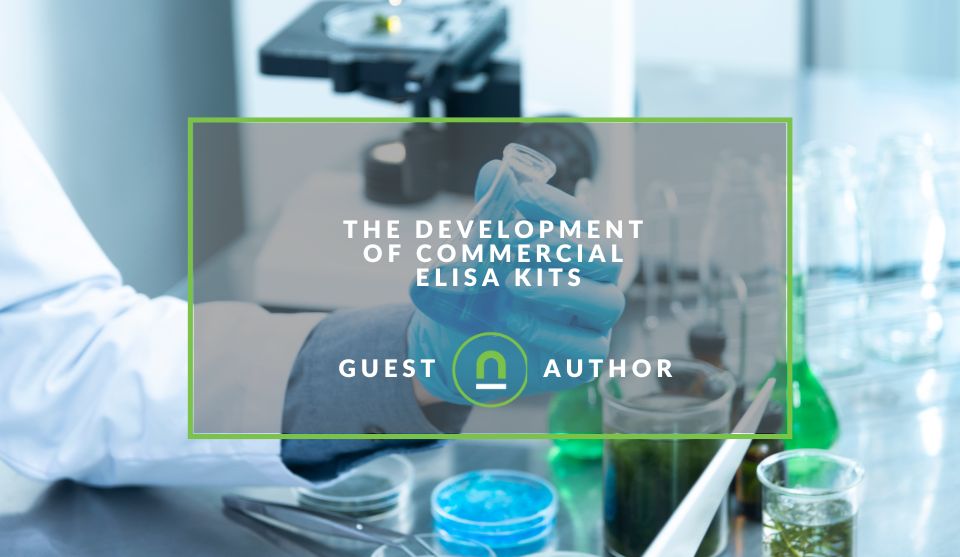Recent posts

nichemarket Advice
The South African VAT Threshold Chokehold
05 December 2025

Doctors Orders
The Difference Between SOAP Notes and DAP Notes
02 December 2025

Petrol heads
Why Load Bin Accessories Make Your Bakkie So Much Easier to Live With
26 November 2025

Alarming
What Is The Part Time Job WhatsApp Scam?
25 November 2025
Popular posts
Extravaganza
Trending Music Hashtags To Get Your Posts Noticed
24 August 2018
Geek Chic
How To Fix iPhone/iPad Only Charging In Certain Positions
05 July 2020
Extravaganza
Trending Wedding Hashtags To Get Your Posts Noticed
18 September 2018
Money Talks
How To Find Coupons & Vouchers Online In South Africa
28 March 2019
The Development Of Commercial ELISA Kits
21 December 2022 | 0 comments | Posted by Jessica Smith in Doctors Orders
Scientists keep looking for better ways to enhance the research and detection of various essential elements. ELISA kits are one of the robust techniques developed by scientists helpful in detecting and quantifying components such as proteins. Manufacturers have specialised in developing various ELISA kits with unique features that fit the required research perfectly.
Commercial ELISA kits are manufactured through rigorous research and development processes under strict manufacturing conditions. This helps to ensure efficiency and other added advantages for medical research and clinicians. Manufacturing and development of commercial ELISA kits are regulated by international standards, which aim at guaranteeing clinical laboratories get strong, reliable, and reproducible results.
The following article will examine commercial ELISA kits' manufacturing and development process.
What is an ELISA Kit?
Enzyme-linked immunosorbent assay (ELISA) is used to detect and quantify specific proteins. The detection process begins by capturing antigens of interest or immobilising them on a solid surface, complexing them using an antibody linked to an enzyme, and then examining the activities of the conjugated enzyme through incubation using a substrate to give a measurable product.
Manufacturing and developing ELISA kits takes a systematic process, including selecting a format (direct, indirect, or sandwich format), gathering the required components, and designing a working framework. In addition, ELISA optimisation involves systematic adjustment and detection of the various components to ensure the results will be accurate and reliable.
Most ELISA kit manufacturers develop commercial ELISA for particular/specific research. For example, commercial malaria ELISA kits are used to test antimalarial antibodies. They are common in blood screening during blood donation to detect any possible malaria infections. There are two types of commercial ELISA kits, manual and automatic ELISA.
Both manual and automatic ELISA kits provide similar results, as they all have to go through a thorough test for stability and reproducibility under various environmental conditions.
Here is The Development and Manufacturing Process of Commercial Elisa Kits
Coating the Microplate with First Antibody
The first step in developing a commercial ELISA kit is to coat the solid adsorbent phase, such as the polystyrene microplate's wall, using specific antibodies for the analyte of interest.
To ensure efficient coating of the Microplate, an aqueous solution, such as bicarbonate or PBS with a particular antibody, is keenly added and left to absorb for some time.
Preventing Unnecessary Interactions
After the coating, there is an unbound antibody that remains. Therefore, the walls of the Microplate will be washed with the coating buffer to remove any unbound antibodies. The coating buffer must be decanted.
Further, the walls of the Microplate are incubated with solutions containing irrelevant detergent or protein to help block the unabsorbed sites on the sites. This helps to reduce the non-specific binding of the analyte and any reactants used during testing. However, some commercial ELISA kits omit this step.
Stabilising the ELISA Microplate
After approximately one hour, the plate is dried at room temperature. You can add stabilisers such as antimicrobials and sugar to the final solution after the first and second steps to help reduce the effects of bacteria, humidity, and fungi on the Microplate.
Enzyme Labeled Antibody
Another essential step in developing and manufacturing commercial ELISA kits is the addition of a second antibody. If you use monoclonal antibodies, you need antibodies that recognise various epitopes on the analyte. The second antibody is usually not used for coating but is chemically bound to enzymes, including horseradish peroxidase and alkaline phosphatase.
Most of the enzyme-labelled antibodies are provided by manufacturers through a buffered solution. This makes them readily available for use. Additionally, the manufacturer provides highly concentrated buffered wash solution and detergent applied during the assay process.
Substrate solutions
Commercial ELISA Kit Manufacturers provide a ready-to-use buffered substrate solution after the whole process. The solution comes with a chromogen that helps in detecting elements of interest. For example, chromogen such as hydrogen peroxide and tetramethylbenzidine turns dark blue from colourless when peroxidase enzymes are present in the solution.
Stop solution
The manufacturer also provides a stop solution that will allow you to observe and read the results. For example, they provide sulfuric acid, which you are supposed to add to the solution to stop further colour generation.
This gives you enough time to read the results using the microplate reader without any additional changes to the solution when reading. The manufacturer may also provide several calibrators and controls with values of international standards.
Quality control
Lastly, to ensure the efficient, robust, and reliable performance of the ELISA kits, the manufacturer has to ensure a regular quality check of each batch. This helps to ensure that the commercial ELISA kits continuously meet the designed performance specification.
Bottom-Line
Commercial ELISA kits are reliable for specific research. They are developed and manufactured under strict and highly regulated conditions. In addition, manufacturers ensure regular quality control that guarantees improved and high performance of these kits.
The manufacturing team always creates or recommends a testing procedure during assay development to ensure optimal performance. Therefore, to ensure you get accurate and reliable results when using commercial ELISA kits, it's essential to follow the exact instructions provided by the manufacturer.
Tell us your story
Would you like to write for nichemarket just like Jessica has? Find out how to submit a guest post and when you're ready, you can contact us.
Contact us
If you would like us to improve the advertising for your site or want to know more about digital marketing for your business, then don’t be shy we’re happy to assist. Simply contact us
Are you looking to promote your business?
Business owners can create your free business listing on nichemarket. The more information you provide about your business, the easier it will be for your customers to find you online. Registering with nichemarket is easy; all you will need to do is head over to our sign up form and follow the instructions.
If you require a more detailed guide on how to create your profile or your listing, then we highly recommend you check out the following articles.
Tags: Science, Medical, Guest Post
You might also like
What Is The Part Time Job WhatsApp Scam?
25 November 2025
Posted by Che Kohler in Alarming
A deep dive into the scheme behind all these random WhatsApp invites or Telegram chats offering you part-time remote work that pays you out instantly...
Read moreThe South African VAT Threshold Chokehold
05 December 2025
Posted by Che Kohler in nichemarket Advice
How South Africa's R1 Million Limit Keeps Small Businesses From Developing, And Why Even Adjusting For Inflation Alone Would Free Up Burdens On Small...
Read more{{comment.sUserName}}
{{comment.iDayLastEdit}} day ago
{{comment.iDayLastEdit}} days ago
 {{blogcategory.sCategoryName}}
{{blogcategory.sCategoryName}}
